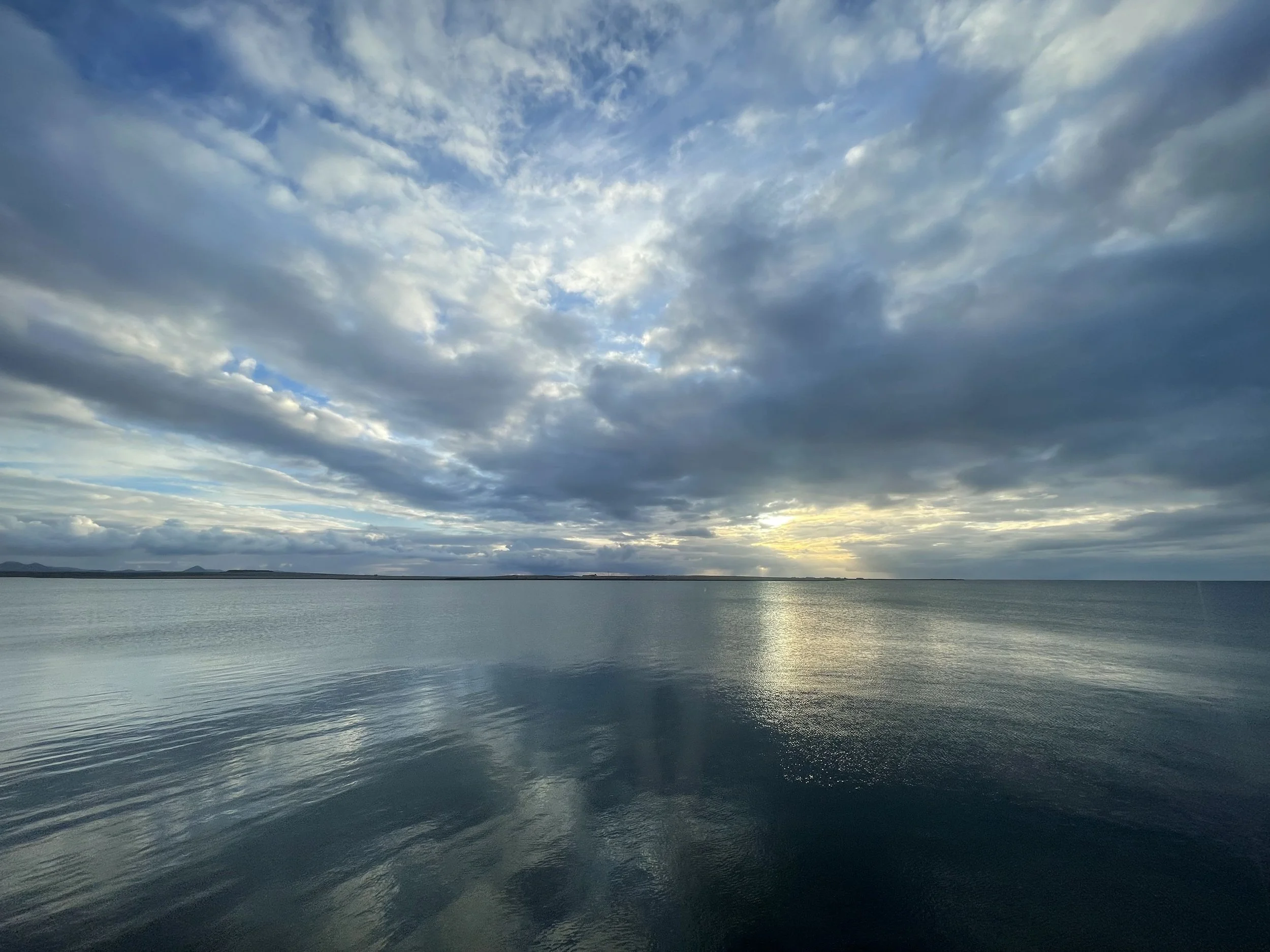Walking through Iceland
Among Ice, Lichen, and Light
by Sofia Sayabalian
Having the opportunity to visit Reykjavík, Iceland was a special one. I always thought of Iceland as an isolated place–far, freezing, and frosted with whispers of mystery that permeate the island. After a 10-day study abroad program through the University of Washington, I am leaving with various gems to take back with me to the states.
Nature’s Wisdom
The natural beauty of Iceland is almost incomprehensible. Icelandic lichen covers the terrain, and around the landscape, trees slowly die from the sulfur rising from deep underground. The island nation sits in the middle of the Atlantic Ocean and is shaped by geysers, volcanoes, and geothermal lakes. On any given day, you can expect a mix of rain, snow, and sunshine.
As I was walking through some of these areas, I could feel the raw force of Iceland’s nature. During our Golden Circle tour–a popular route that takes you to three scenic landmarks–the final stop was the Gullfoss waterfall. Standing before that roaring rush of water, I felt small. Not in a diminished way, but in awe. There was a quiet indifference between us. I was unimportant and that somehow felt humbling and beautiful. Nature wasn’t asking anything of me; it simply was.
The presence that nature held didn’t fade after I left Gullfoss Falls. Over the ten days I spent in Iceland, I came to see that nature is not simply admired–it’s respected, protected, and even written into the country’s vision of itself.
In 2011, Iceland introduced a draft for a new constitution, and among its proposed elements was the idea that nature should be protected–not just because it’s nice, but in practical and lasting ways. One article stated that Iceland’s nature forms the foundation of life in the country—and that everyone has a responsibility to respect and protect it. Another declared that natural resources not owned privately belong to the nation as a whole and can’t be sold or mortgaged. Although the draft was never formally ratified, its spirit lives on in the people of the country. Many still recognize and honor its principles–if not legally, then intuitively.
Psychogeography
During a free afternoon, a small group of us took part in a drift–a directionless walk also known as intentional wandering. The exercise comes from psychogeography, a field that studies the psychological effects of place and movement and how different environments may impact our emotions and sense of connection.
When we walk, we are often in a hurry to get to a certain place. But a drift doesn’t have constraints. During my walk, I wrote my observations in a journal and used the app Strava to visually chart my route. As I walked towards downtown Reykjavík, I first found myself taking the side streets.
I noticed a black cat creeping on the sidewalk, its dark body contrasting eerily against a yellow building. I passed by a hair salon and through the window saw a young boy crying while getting his hair cut, his dad easing his pain. Eventually I made it to a main street called Laugavegur where hot chocolate sounded nice. I found a café and sat at the bar, eagerly waiting for my hot beverage.
There is something deeply embodied in the ways we walk, almost like there’s an ancient truth behind the way our legs carry us through streets, down avenues. These human experiences that made up my ‘drift’ were quietly pleasing and unexpectedly rich. Even though I was just walking the streets near my hotel, the lack of destination felt freeing. The natural world is all around us, we just need to look up.
The Anthill
Sitting inside the House of Collections Museum in downtown Reykjavík, my classmates and I were tasked with an interesting activity. We stepped into the roles of a democratic constitutional assembly where we discussed our most important values in an attempt to understand what we all really want. And what we often really want are often the same things: love, acceptance, belonging.
Having learned that Iceland used a similar approach when drafting its proposed new constitution, it made sense that the country consistently ranks among the happiest in the world. Through this activity, we tapped into a sense of collective wisdom.
At one point, our speaker showed us an image of an anthill, reminding us that multiple working together are far more powerful than a single ant. It might seem like a silly metaphor at first, imagining hundreds of ants working in harmony, but the image holds but a deeper point. We can’t do everything alone, we need each other. And part of that means letting go of control, and replacing it with trust, collaboration, and grace.
Iceland is an inspiration for many countries. It shows us what’s possible. Its respect for nature, its natural wonders, its strides in gender equality, and its overall sense of safety—these were things I didn’t take for granted, and feel lucky to have experienced.
Header Photo: Pexels





